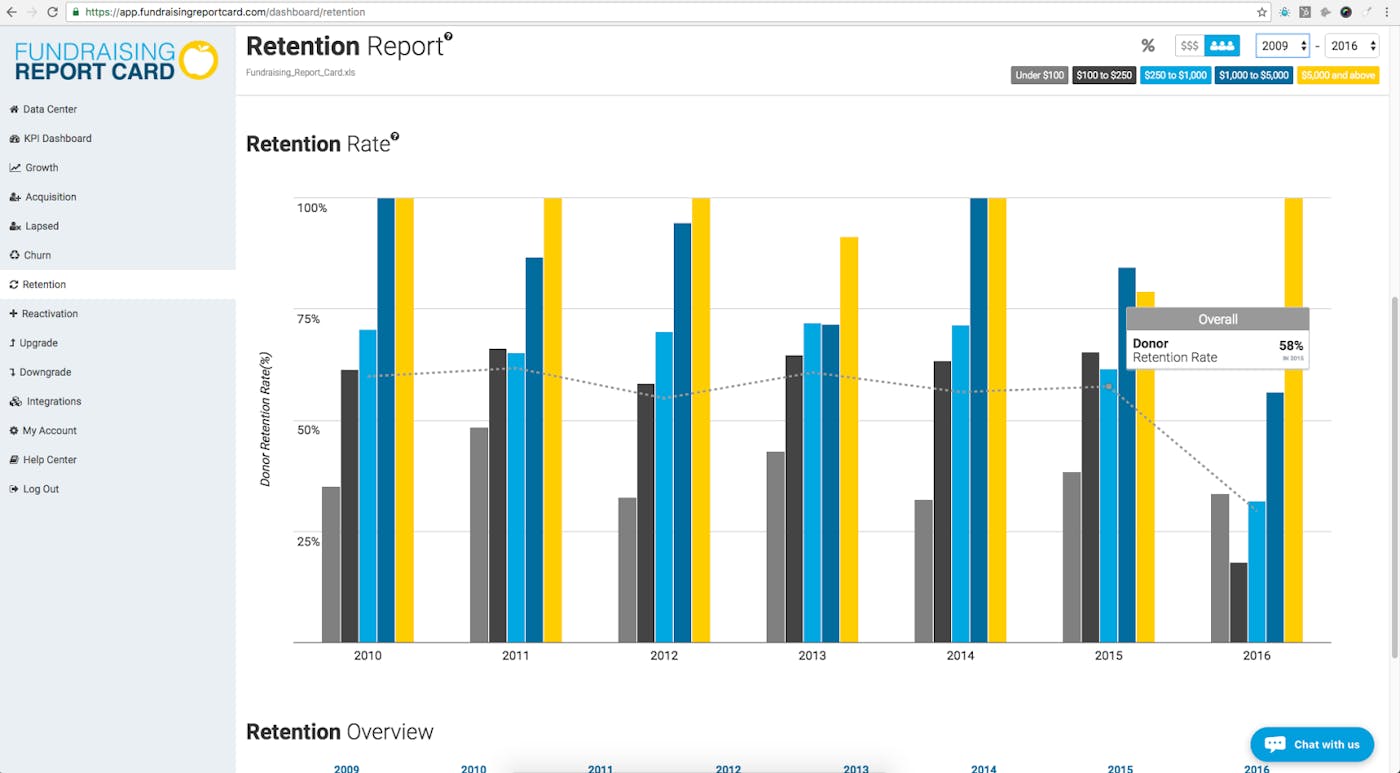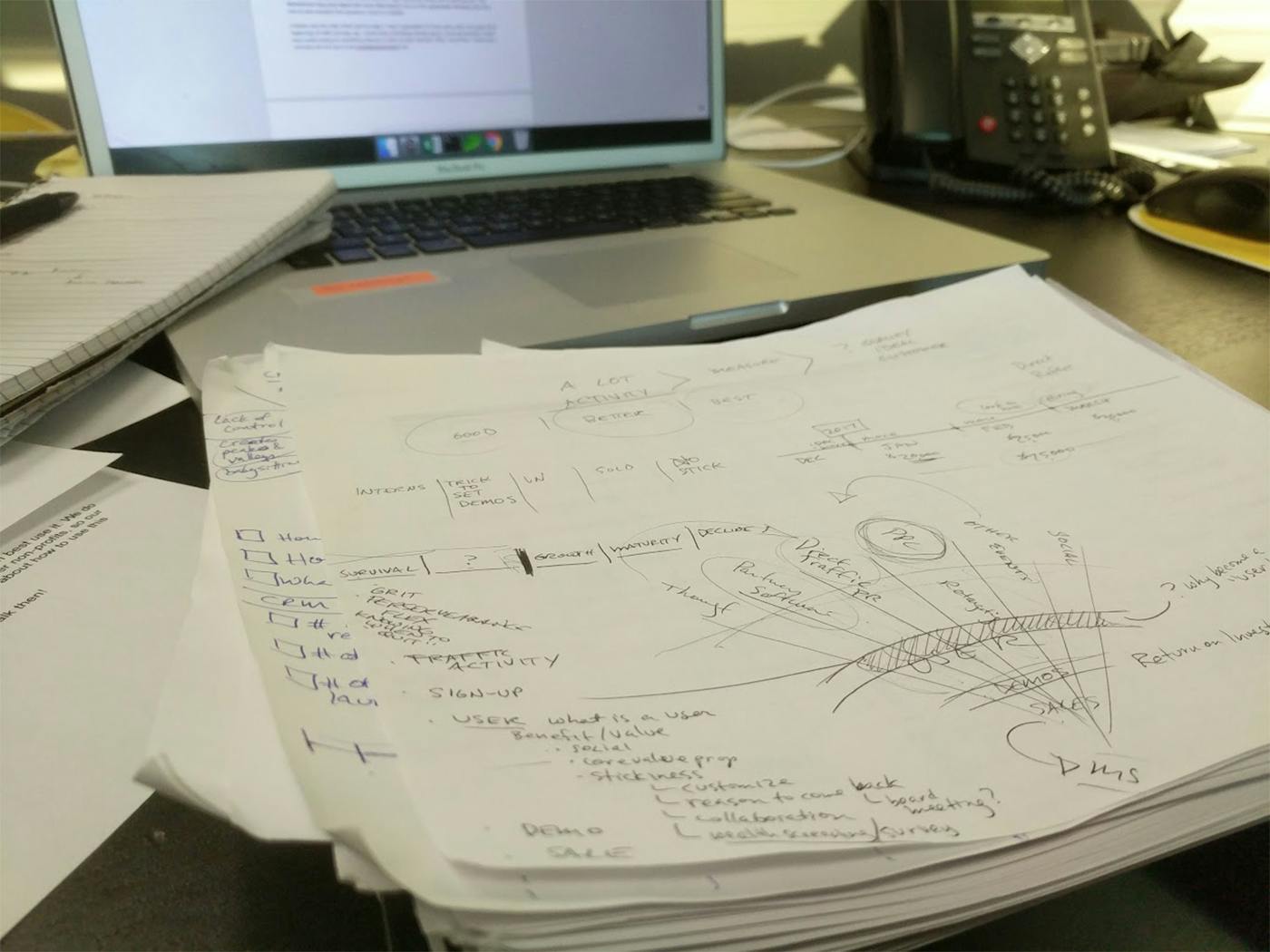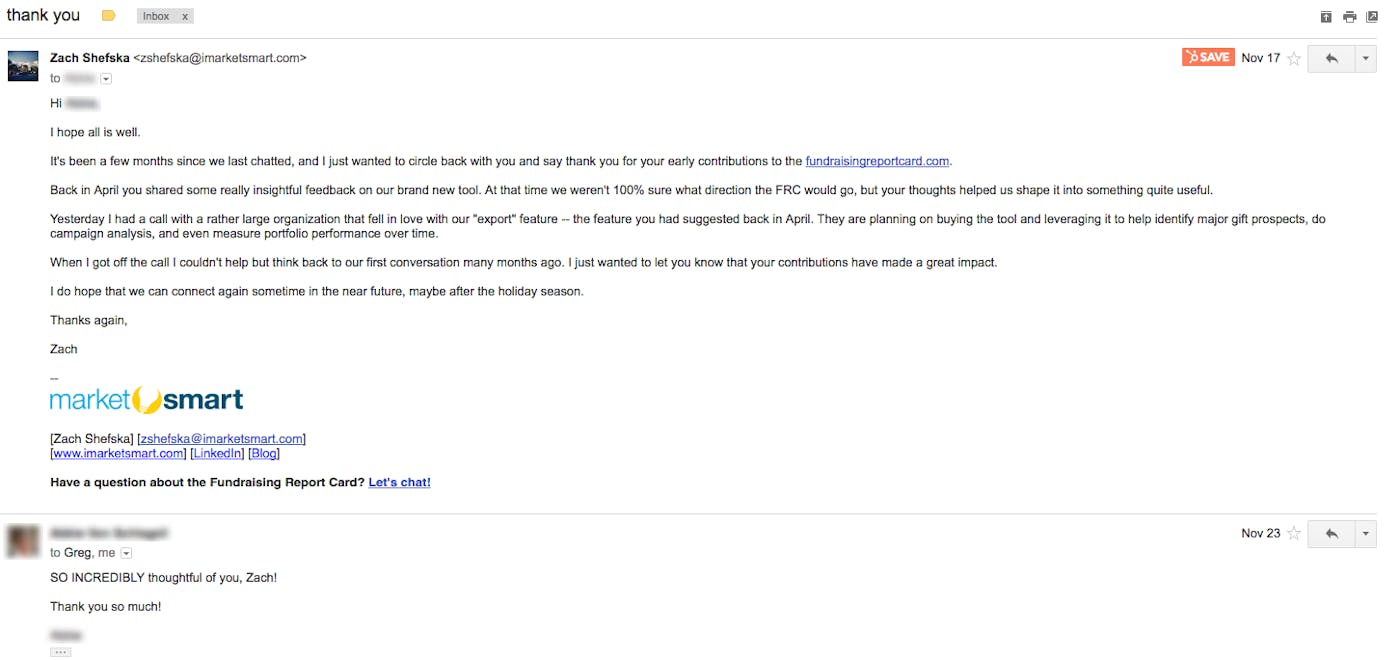Growing to $7500/mo By Talking to Customers via
LinkedIn
Hello! Introduce yourself and let us know what you're working on.
Hi, my name is Zach Shefska. I created Fundraising Report Card — a simple analytics tool that helps nonprofits of all sizes make sense of their donor data and optimize their fundraising efforts.
Before concentrating full-time on Fundraising Report Card, I worked as a front-end developer at MarketSmart. MarketSmart creates marketing and software solutions for nonprofit organizations. I've had the privilege to help develop legacy giving and major gift websites and campaigns for great organizations like Human Rights Watch, UCLA, City of Hope, and many others.
Before MarketSmart, I attended the University of Pittsburgh. However, during my sophomore year, I resigned after my mom was diagnosed with stage IV lung cancer. I moved back home to the Annapolis, MD area for obvious reasons.
And, before the University of Pittsburgh, I had taught myself how to use Adobe Illustrator and hack together WordPress websites. That skillset was enough to land an entry-level position at MarketSmart back in 2014.
Ultimately, MarketSmart provided the springboard (financial backing and resources) to create and launch Fundraising Report Card.

What motivated you to get started with Fundraising Report Card? What were your initial goals? And how'd you come up with the idea?
I'm really fortunate to have a great mentor. When I was first hired at MarketSmart I made it really clear to Greg Warner, the founder and CEO, that I was entrepreneurial. That sentiment must have resonated with him, because about a year after working at MarketSmart in front-end development, Greg approached me with an idea for a new department within the company. That new department ultimately became Fundraising Report Card.
At the time Greg approached me, MarketSmart had about 100 different clients. One of the recurring complaints we heard from those clients was a lack of clarity when it came to understanding their data. These fundraisers wanted reports on key performance metrics (growth, retention, attrition, etc.) but had no means other than to become an Excel master, or to hire a costly consultant.
It was this pain that inspired Greg to tap into my entrepreneurial spirit.
Initially we thought Fundraising Report Card would simply be an internal tool that we used to help our clients make more sense of their donor data. Yet, as we beta tested a rough, early version of the product we got overwhelmingly positive feedback. Ultimately we decided to dedicate the time, money, and resources to create a standalone product and department.
What did it take to build the initial product? How long until you were ready to launch?
Whew... I didn't realize it at first, but building something is tough. Not tough in the sense that it's complex, but tough in the sense that it takes a lot of planning, organization, and vetting before a single line of code can, or at least should, be written.
I adopted the mindset early on that we needed to create something unbelievably "minimal" to simply gauge interest in what we were doing. That meant within weeks of seriously considering running with this idea, we created a single HTML page with jQuery and the Google Charts API loaded on it.
We asked a client (one that had struggled analyzing their fundraising metrics) for some of their donor data (just donor ID #'s, donation dates and donation amounts). Then we ran that through a simple Python script that calculated their year-over-year donor growth broken down by donor giving capacity — $100 and under donors, $100-$250, etc. After that, we took the data and hardcoded it on the HTML page with the Google Charts API and created a super simple visual report to share with the client.
They loved it.
I did that about ten times with different organizations, and that was how we got initial feedback and direction.
During all of this time I was still working full-time developing websites for MarketSmart clients. For several months I worked 60+ hour weeks, focusing on Fundraising Report Card development and digesting feedback at night and on the weekends.
Fortunately I was in a unique position to leverage existing relationships and resources MarketSmart had during this process. That helped, but presented issues of its own. Some folks I initially interacted with shared really positive comments and sentiments, but that was solely the result of their affinity for MarketSmart. They were "false positives," and ultimately expensive distractions.
But we overcame that and "launched" in July with a blog post on MarketSmart's blog, SmartIdeas. That was five months after Greg had initially approached me and two months after we created that single Google Charts page.
What marketing strategies have you used? How have you attracted users and grown Fundraising Report Card?
Fundraising Report Card has a Free and Pro version (classic freemium). Our free tool is a major driver of organic growth.
Our "launch" was less of a launch and more of a "Dear friends and family, this is what we built." The MarketSmart blog post helped with some initial traction, but our first upgrade/sale ultimately came from one-on-one outreach from someone I found on LinkedIn.

LinkedIn was the major driver of traffic and sign ups. (And by major, I mean it generated 5-10 free users, which was a lot at the beginning.) I joined every fundraising industry group I could, and every day I would scour posts looking for something relevant to what our team had built. When I found them I would post a comment and link back to FundraisingReportCard.com.
At the same time, I began writing content on fundraising analytics and metrics. I simply wrote about what I was learning — how to calculate donor retention for example. I don't like to think that I got lucky, but one of those articles I wrote got reposted on an industry group "top ten" list, and that led to a huge spike in traffic. I immediately logged into the email marketing automation program that I use (Drip) and created a simple call to action widget to convert some of the traffic to become blog subscribers.
Inbound marketing efforts are definitely a primary focus. Blog posts are great, but so are infographics, cheat sheets, webinars, videos, podcasts, etc. Fundraising metrics and analytics is a relatively new marketplace, especially for smaller organizations. That means that a lot of our marketing efforts are spent on education — we need to help develop the marketplace before we can capture it. A focus on inbound marketing helps accomplish that.

We've seen a steady increase in organic search traffic, which is always nice!
With that being said, I have used a variety of other channels to drive activity. Most recently I used AWS SES and Sendy to send out a few thousand cold emails. These work. I've set up Adwords campaigns to retarget website visitors that don't immediately convert. This appears to work as well.
Last but not least, I reached out to donor CRM software firms about integrating their software with us. This has been the biggest driver of activity. Three of the larger CRM firms (about 7,500 paying clients between the three of them) agreed to integrate with Fundraising Report Card. This was, and still is, huge. We now have a nice cadence of one CRM launch each month which generates a few hundred highly qualified leads.
How does your business model work? What's the story behind your revenue?
Fundraising Report Card is your classic freemium product. With freemium you have to rely on a few assumptions, the most important one being that there is a large enough addressable market.
In the United States alone there are well over one million nonprofit organizations. That was enough, we thought, to give this a try.
For all the great benefits freemium offers, it also has it's downsides… There are costs to supporting all of those free users. Fortunately, about 10% of our engaged users upgrade to the Pro version.
As for pricing, that was a crapshoot early on. We offer tiered pricing for the Pro tool based off of the amount of data the organization analyzes. This is billed annually.
I have emails from the very beginning with folks laughing at pricing that included tiers in the tens of thousands of dollars. It wasn't until recently that we felt truly comfortable with our pricing.
During every phone call I have with free users who are considering upgrading to Pro, I show them our pricing page. Every time I ask them same question, "Are these numbers palatable to you?" I have no clue where that phrase came from, but it works. Folks either say, "Yes, this is reasonable," or less frequently, "o, but I would pay $xxx." It's really insightful to ask this question.
Our first upgrade came a few weeks after launch. I had contacted a consultant in Canada who had posted an interesting blog post on LinkedIn. We got on a call and I demo'd Fundraising Report Card for him (at this time I had no clue what I was doing) and afterwards he created a free account.
A week later we had a second phone call. He said he wanted to upgrade to Pro, and I told him that it would be $1,000 — with the Canadian-to-American conversion rate, he was looking at a $1,200 investment. I ended up making a coupon code in Stripe that took the price down to $500.

That weekend I got an email from Stripe saying $500 had been charged. It was great and exciting! The funny thing was that we hadn't actually built in the capacity to "upgrade" users after they paid!
What are your goals for the future? Are there any big challenges you see on the horizon?
We have a few big goals for 2017, the two most important pertaining to revenue and education:
- Revenue-wise, we want to hit $500,000 in billings for 2017.
- Education-wise, we want to establish ourselves as industry leaders in fundraising analytics education and training.
We face a few potential challenges that could severely affect our ability to do both of these things. First and foremost, an incumbent (the major one in the nonprofit tech sector is BlackBaud) could come along and build the same thing we have. And second, we could have bad timing.
But, fortunately, from all the conversations I have with users and potential users it seems that the timing is right. There are books being published, one such titled Data Driven Nonprofits. And more and more folks are taking an interest in optimizing their fundraising with data.
As for an incumbent coming along and squishing us, I don't see it happening, at least not next year. Plus, BlackBaud, the one major player in the space, has a history of acquiring smaller companies that they think can benefit their users. We will see what happens.
What are the biggest lessons you've learned so far? If you had to start over, what would you do differently?
It's too soon to know. I'll probably have a good answer for this question around this time next year. But, if I had to take a stab at it, I'd say the most important thing we should have done differently would have been engaging a larger group of "thought leaders" earlier.
I think we did a good job beta-testing and learning what our users wanted, but I think we could have done that sooner and more effectively.
There is a book called How Breakthroughs Happen. The author, Andrew Hargadon, makes the point that you need to bring together a wide variety of individuals and internalize their thoughts, comments, feedback, etc., to truly create something innovative. I think we could have done a better job adopting this mindset early on.
What's been most helpful to you on your journey? What do you think your biggest advantages have been?
Reading the Groove blog. That thing is a goldmine. I take so much from what Alex and his team writes about.
And, in the same vein as my comment from above, talking to a lot of people and being prepared to hear things you don't want to hear.
I had a phone call while we were still beta testing the product with a really well established consultant. She tore me to pieces. She used acronyms and terms that went right over my head. She spent an hour on the phone with me simply teaching me basic fundraising analytics concepts. She was kind, but she was ruthless. I recently had the pleasure of sending her this email though, nearly 6 months later.

Experiences like that have been the most helpful and eye opening.
What's your advice for aspiring indie hackers?
Get on the phone. Call people. LinkedIn message people. Comment on blogs. Talk to relevant people in your field of interest.
A great product will find its fit in the market. Once you have that it is all strategy and execution. But getting that first part right — building a great product — is undoubtedly difficult. The more you surround yourself with people who are interested in what you are doing, the more quickly you will get there.
Where can we go to learn more?
Although you might not work for a nonprofit, you may know someone who does. If you think they might get some use out of a free analytics, tool send them this link: FundraisingReportCard.com.
For more info on fundraising analytics in general take a peek at our blog.
And, if you're interested in learning a bit more about me take a look at my website, shefska.com or follow me on Twitter: @shefska.

This comment was deleted 7 years ago